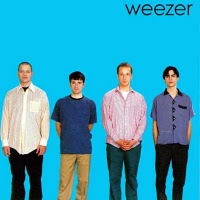 The great tunes here deal with sex (as great songs usually do), such as “Undone (The Sweater Song)” and “Only in Dreams.” The epic “Say it Ain’t So” is one of the best songs of the decade, period. The band doesn’t waste time noodling around and every track sounds punchy and vital. Another positive are the smart lyrics. Not smart because they try to be clever – quite the opposite, actually. Every word rings true, which is quite a feat considering they aren’t masked by slick wordplay or attempts at poetic garbage. Cuomo writes pop songs as perfect as Oasis thinks theirs are. Somehow, the band filters them through the type of sun-drenched garage sensibility that is usually reserved for SoCal bands only. Finally, Weezer never overreaches or missteps, making this a thoroughly enjoyable experience from start to finish. –Lucus
The great tunes here deal with sex (as great songs usually do), such as “Undone (The Sweater Song)” and “Only in Dreams.” The epic “Say it Ain’t So” is one of the best songs of the decade, period. The band doesn’t waste time noodling around and every track sounds punchy and vital. Another positive are the smart lyrics. Not smart because they try to be clever – quite the opposite, actually. Every word rings true, which is quite a feat considering they aren’t masked by slick wordplay or attempts at poetic garbage. Cuomo writes pop songs as perfect as Oasis thinks theirs are. Somehow, the band filters them through the type of sun-drenched garage sensibility that is usually reserved for SoCal bands only. Finally, Weezer never overreaches or missteps, making this a thoroughly enjoyable experience from start to finish. –Lucus
Rock
Armageddon “Armageddon” (1975)
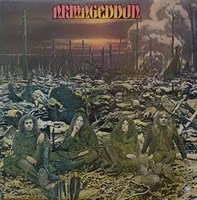 Shaggy proto-metal stretched and contorted into long winded, progressive forms, second tier supergroup Armageddon recall the similarly assembled Captain Beyond in both form and execution, both bands in fact sharing a member in drummer Bobby Caldwell. Ex-Yardbirds and Renaissance vocalist Keith Relf fronts the group, while Steamhammer’s Martin Pugh lays down piercing, wah-washed guitar on the circling “Buzzard,” slashes and burns through the frantic “Paths and Planes and Future Gains,” and works a heavy funk riff ala Zeppelin and Budgie on “Last Stand Before.” Elsewhere there’s the glassy tones of the ethereal “Silver Tightrope,” and the album concludes with a rambiling, multi-part suite in “Basking in the White of the Midnight Sun.” An impressive, semi-obscure heavy gem that any fan of bludgeoning bell-bottom rock should enjoy surrendering to. –Ben
Shaggy proto-metal stretched and contorted into long winded, progressive forms, second tier supergroup Armageddon recall the similarly assembled Captain Beyond in both form and execution, both bands in fact sharing a member in drummer Bobby Caldwell. Ex-Yardbirds and Renaissance vocalist Keith Relf fronts the group, while Steamhammer’s Martin Pugh lays down piercing, wah-washed guitar on the circling “Buzzard,” slashes and burns through the frantic “Paths and Planes and Future Gains,” and works a heavy funk riff ala Zeppelin and Budgie on “Last Stand Before.” Elsewhere there’s the glassy tones of the ethereal “Silver Tightrope,” and the album concludes with a rambiling, multi-part suite in “Basking in the White of the Midnight Sun.” An impressive, semi-obscure heavy gem that any fan of bludgeoning bell-bottom rock should enjoy surrendering to. –Ben
Little Feat “Sailing Shoes” (1972)
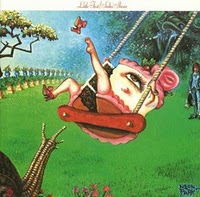 This wonderfully bizarre album cover hides the secret love child of ZZ Top’s “Tres Hombres” and The Stone’s “Exile on Main Street.” “Sailing Shoes” is an eclectic mix of rock, country, blues and gospel that avoids the Southern and country-rock cliches and is experimental enough to reward repeated listening. In the past, when I’ve thrown on The Allman Brothers or Dr. John, I’ve been disappointed because THIS was the album I wanted to hear all along! It’s a rare album that transcends genres and consistently surpasses expectations but Little Feat has done it here. If you love seventies rock slip on “Sailing Shoes,” walk over to Jive Time and thank me! (And then pick up the equally impressive “Dixie Chicken.”) –David
This wonderfully bizarre album cover hides the secret love child of ZZ Top’s “Tres Hombres” and The Stone’s “Exile on Main Street.” “Sailing Shoes” is an eclectic mix of rock, country, blues and gospel that avoids the Southern and country-rock cliches and is experimental enough to reward repeated listening. In the past, when I’ve thrown on The Allman Brothers or Dr. John, I’ve been disappointed because THIS was the album I wanted to hear all along! It’s a rare album that transcends genres and consistently surpasses expectations but Little Feat has done it here. If you love seventies rock slip on “Sailing Shoes,” walk over to Jive Time and thank me! (And then pick up the equally impressive “Dixie Chicken.”) –David
XTC “Black Sea” (1980)
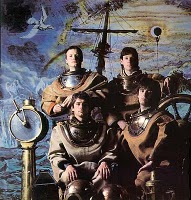 By 1980’s “Black Sea” XTC were fully into their stride, the previous years exceptional “Drums And Wires” remains an early high water mark yet “Black Sea” sees them expanding their sound further, moving away from the angular, sparky new wave of that album and towards a tougher, rockier sound, as such it’s arguably their most accessible of all their early albums. A 60’s feel is beginning to rear it’s head in a lot of their work, take for instance “Respectable Street” and “Towers Of London,” the former has strong echoes of mid 60’s Kinks whilst the latter is pure “Rubber Soul” era Beatles, both given a punkish twist, “No Language In Our Lungs” also has a strong Beatles influence but still manages to sound typically XTC. Where “Drums And Wires” was rough around the edges “Black Sea” is a lot more focused and less artsy sounding, still this is XTC so fans of their artsy leanings can always revel in “Travels In Nihilon’s” apocalyptic soundscape or “Living Through Another Cuba’s” dub infused paranoia but overall Black Sea is a lot more polished and poppy than anything the band had recorded since their spiky, charming debut. “Generals And Majors,” “Love At First Sight,” “Rocket From A Bottle,” “Paper And Iron” and “Burning With Optimism’s Flames” would all have made great singles, strange then that they chose to release arguably the album’s weakest track, the XTC by numbers of “Sgt Rock,” still it’s one misstep on an otherwise blemish free album, I prefer the jittery, nervous “Drums And Wires” ever so slightly but that does not diminish “Black Sea’s” tough majesty. Yet another classic from England’s most underrated band. –Derek
By 1980’s “Black Sea” XTC were fully into their stride, the previous years exceptional “Drums And Wires” remains an early high water mark yet “Black Sea” sees them expanding their sound further, moving away from the angular, sparky new wave of that album and towards a tougher, rockier sound, as such it’s arguably their most accessible of all their early albums. A 60’s feel is beginning to rear it’s head in a lot of their work, take for instance “Respectable Street” and “Towers Of London,” the former has strong echoes of mid 60’s Kinks whilst the latter is pure “Rubber Soul” era Beatles, both given a punkish twist, “No Language In Our Lungs” also has a strong Beatles influence but still manages to sound typically XTC. Where “Drums And Wires” was rough around the edges “Black Sea” is a lot more focused and less artsy sounding, still this is XTC so fans of their artsy leanings can always revel in “Travels In Nihilon’s” apocalyptic soundscape or “Living Through Another Cuba’s” dub infused paranoia but overall Black Sea is a lot more polished and poppy than anything the band had recorded since their spiky, charming debut. “Generals And Majors,” “Love At First Sight,” “Rocket From A Bottle,” “Paper And Iron” and “Burning With Optimism’s Flames” would all have made great singles, strange then that they chose to release arguably the album’s weakest track, the XTC by numbers of “Sgt Rock,” still it’s one misstep on an otherwise blemish free album, I prefer the jittery, nervous “Drums And Wires” ever so slightly but that does not diminish “Black Sea’s” tough majesty. Yet another classic from England’s most underrated band. –Derek
The Rolling Stones “Some Girls” (1978)
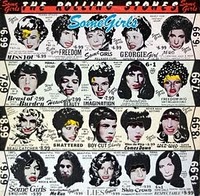 When I was in school the rules were clear: Rock ruled. Disco and punk sucked. The end. As a devoted rocker I carried my KISW “Disco Sucks” club card in my wallet and expressed disgust whenever Donna Summer or the Sex Pistols were mentioned (having never actually heard either). Then something miraculous happened: The Rolling Stones released “Some Girls.” The Stones’ ability to blend rock, blues and country with the seemingly polarizing disco and punk made me realize for the first time that it was all related and that it was all rock and roll! Pre-internet, this album was also my portal to a world outside of the suburbs of Seattle. I’ll never forget the first time I heard the sleazy “Shattered,” and prowling “Miss You” on the radio, flooding me with images of a gritty, decadent New York. The sexually charged lyrics, androgynous imagery and Jagger’s swagger (along with the infamous SNL appearance promoting the album) suggested a sexual world infinitely more complex and exciting than the black and white one previously painted for me by the likes of Kiss and Aerosmith. Even the Warhol-esque, die-cut cover’s tabloid kitsch influenced the way I thought about art and design. Best of all, “Some Girls” sounds as fresh to me today as it did in ’78 and continues to hold a coveted top spot in my record collection. Some Girls. Some album! –David
When I was in school the rules were clear: Rock ruled. Disco and punk sucked. The end. As a devoted rocker I carried my KISW “Disco Sucks” club card in my wallet and expressed disgust whenever Donna Summer or the Sex Pistols were mentioned (having never actually heard either). Then something miraculous happened: The Rolling Stones released “Some Girls.” The Stones’ ability to blend rock, blues and country with the seemingly polarizing disco and punk made me realize for the first time that it was all related and that it was all rock and roll! Pre-internet, this album was also my portal to a world outside of the suburbs of Seattle. I’ll never forget the first time I heard the sleazy “Shattered,” and prowling “Miss You” on the radio, flooding me with images of a gritty, decadent New York. The sexually charged lyrics, androgynous imagery and Jagger’s swagger (along with the infamous SNL appearance promoting the album) suggested a sexual world infinitely more complex and exciting than the black and white one previously painted for me by the likes of Kiss and Aerosmith. Even the Warhol-esque, die-cut cover’s tabloid kitsch influenced the way I thought about art and design. Best of all, “Some Girls” sounds as fresh to me today as it did in ’78 and continues to hold a coveted top spot in my record collection. Some Girls. Some album! –David
Billy Nichols “Would You Believe” (1968)
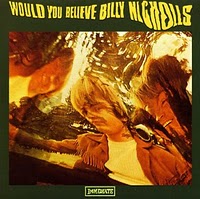 “Would You Believe” is stunning late ’60’s pop crafted with knowing nods of love to Brian Wilson’s Pet Sounds, that thankfully NEVER forgets the importance of the… (cough) London Social Degree. However, if drug references are Billy’s point, they’re overwhelmed soniclly as “Would You…” is packed full of LUSH, dense arrangements awash with a “sound” that serves to unify the LP as a whole… it’s absolutely gorgeous. In fact… I own two copies (I wish!). Anyways, turns out, thirty years ago, this LP was shelved without any believable reason, the Loog, the fella responsible for the shelving, oughta be ashamed. –Nipper
“Would You Believe” is stunning late ’60’s pop crafted with knowing nods of love to Brian Wilson’s Pet Sounds, that thankfully NEVER forgets the importance of the… (cough) London Social Degree. However, if drug references are Billy’s point, they’re overwhelmed soniclly as “Would You…” is packed full of LUSH, dense arrangements awash with a “sound” that serves to unify the LP as a whole… it’s absolutely gorgeous. In fact… I own two copies (I wish!). Anyways, turns out, thirty years ago, this LP was shelved without any believable reason, the Loog, the fella responsible for the shelving, oughta be ashamed. –Nipper
Fripp & Eno “Evening Star” (1975)
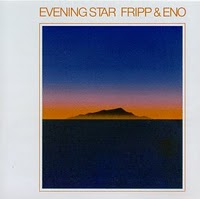 The second collaboration between the two highbrow British art/prog rockers, Evening Star pairs Fripp’s “Frippertronic” guitar, layered and sustained indefinitely through use of analog tape loops, with synthesizer and various treatments from Eno, for an ambient match made in heaven. The serene first side is highlighted by the beautiful title track, which borders on melodic, while still maintaining the minimalist style of Eno’s ambient works. Conversely, the second side, titled “An Index of Metals,” quietly builds layers of ever more dissonant guitar, developing an unnerving atmosphere. This is an album that effortlessly creates a distinctly reflective mood, and is an essential item for fans of either artist. –Ben
The second collaboration between the two highbrow British art/prog rockers, Evening Star pairs Fripp’s “Frippertronic” guitar, layered and sustained indefinitely through use of analog tape loops, with synthesizer and various treatments from Eno, for an ambient match made in heaven. The serene first side is highlighted by the beautiful title track, which borders on melodic, while still maintaining the minimalist style of Eno’s ambient works. Conversely, the second side, titled “An Index of Metals,” quietly builds layers of ever more dissonant guitar, developing an unnerving atmosphere. This is an album that effortlessly creates a distinctly reflective mood, and is an essential item for fans of either artist. –Ben
The Records “The Records” (1979)
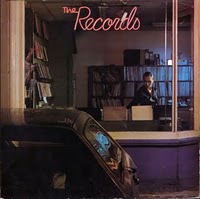 Sure, their flawless, jet-setting single “Starry Eyes” is reason enough to pick up The Records’ debut, but the album as a whole is stuffed with more sugary goodness than your average box of Frosted Flakes. The first side is jam-packed with the restless “All Messed Up and Ready to Go,” adolescent buzz of “Teenarama,” minor key mood piece “Girls That Don’t Exist,” and choice deep cut in the lingering ballad “Up All Night,” while the remainder is highlighted by the punchy rock of “Girl,” nervous “Insomnia,” and jukebox hero tale, “Another Star.” With the requisite vocal harmonies and ringing guitars filled out with the occasional organ or synthesizer, The Records is steadfast in it’s delivery of classic power pop confection. –Ben
Sure, their flawless, jet-setting single “Starry Eyes” is reason enough to pick up The Records’ debut, but the album as a whole is stuffed with more sugary goodness than your average box of Frosted Flakes. The first side is jam-packed with the restless “All Messed Up and Ready to Go,” adolescent buzz of “Teenarama,” minor key mood piece “Girls That Don’t Exist,” and choice deep cut in the lingering ballad “Up All Night,” while the remainder is highlighted by the punchy rock of “Girl,” nervous “Insomnia,” and jukebox hero tale, “Another Star.” With the requisite vocal harmonies and ringing guitars filled out with the occasional organ or synthesizer, The Records is steadfast in it’s delivery of classic power pop confection. –Ben
Black Sabbath “Master of Reality” (1971)
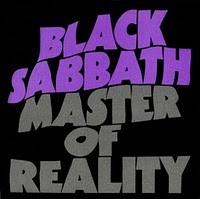 The beautiful thing thing about the first few Black Sabbath records is that, although they’re the heaviest, darkest, and most extreme representations of electric guitar driven music at that time, it’s the kind of thing a five year old could get down to at first listen. Their undeniably satisfying grooves, hooks, and drive leave them sounding as easily digestible as Creedence Clearwater Revival, only dipped in wax and plugged through a marshall stack in the dark. Master Of Reality, Sabbath’s third testament, is probably their darkest. From the black haze of a cover and heaviest album title of all time, to guitar tone that sounds like the amps took bong rips, the record has enough vibe to spook a horse. The songs are laid back and seem to exercise groove endurance, giving the effect of psychedelia through hypnotism. Juxtaposing the fuzz are two short mellow instrumentals and the angelic “solitude,” which sounds like a candle glowing under the ocean. Art of the highest order and accessible to all walks. if you haven’t yet gotten down, I suggest getting down immediately. -Alex
The beautiful thing thing about the first few Black Sabbath records is that, although they’re the heaviest, darkest, and most extreme representations of electric guitar driven music at that time, it’s the kind of thing a five year old could get down to at first listen. Their undeniably satisfying grooves, hooks, and drive leave them sounding as easily digestible as Creedence Clearwater Revival, only dipped in wax and plugged through a marshall stack in the dark. Master Of Reality, Sabbath’s third testament, is probably their darkest. From the black haze of a cover and heaviest album title of all time, to guitar tone that sounds like the amps took bong rips, the record has enough vibe to spook a horse. The songs are laid back and seem to exercise groove endurance, giving the effect of psychedelia through hypnotism. Juxtaposing the fuzz are two short mellow instrumentals and the angelic “solitude,” which sounds like a candle glowing under the ocean. Art of the highest order and accessible to all walks. if you haven’t yet gotten down, I suggest getting down immediately. -Alex
Kiss “Hotter Than Hell” (1977)
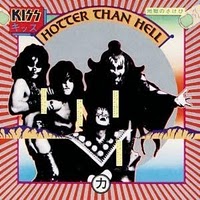 Even though I was an impressionable kid smack dab in the middle of the ’70s I was a late comer to Kiss. It’s long, dumb story, but when I finally did come around it was Kiss’ second album, “Hotter Than Hell,” that turned me on. Specifically, the track “Parasite.” It completely did me in… it’s start/stop sing-a-long lurch… yeah, just my style. The genius, beyond “Hotter Than Hell” obviously being Kiss, is the entire record is solid American mid ’70s Rock and Roll, a bit sing-a-long glam and a little stoned… yep, just right… and that ’70s rock record production, was it engineered (is it the compression?) to feel a tad quiet so you had to turn it up way too loud? –Nipper
Even though I was an impressionable kid smack dab in the middle of the ’70s I was a late comer to Kiss. It’s long, dumb story, but when I finally did come around it was Kiss’ second album, “Hotter Than Hell,” that turned me on. Specifically, the track “Parasite.” It completely did me in… it’s start/stop sing-a-long lurch… yeah, just my style. The genius, beyond “Hotter Than Hell” obviously being Kiss, is the entire record is solid American mid ’70s Rock and Roll, a bit sing-a-long glam and a little stoned… yep, just right… and that ’70s rock record production, was it engineered (is it the compression?) to feel a tad quiet so you had to turn it up way too loud? –Nipper
Crazy Horse “Crazy Horse” (1971)
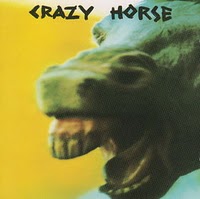 An oft-forgotten little gem of the early 70s, this album is in some respects better than you’d expect a Crazy Horse album to be; but in hindsight, a really strong album by Crazy Horse without Neil Young makes sense. They had all the ingredients necessary for a great band, which is why Young’s albums with them rarely relegate them simply to backing status. The songs are solid, the performances predictably lazy without sounding lifeless, and the group shows a surprising amount of variety both in terms of style and in terms of dynamics. You may be surprised by the number of songs on here that you’ve already heard covered with varying levels of success. Highly recommended to those who own the Neil Young albums, and heartily recommended to fans of early 70s rock in general. –Will
An oft-forgotten little gem of the early 70s, this album is in some respects better than you’d expect a Crazy Horse album to be; but in hindsight, a really strong album by Crazy Horse without Neil Young makes sense. They had all the ingredients necessary for a great band, which is why Young’s albums with them rarely relegate them simply to backing status. The songs are solid, the performances predictably lazy without sounding lifeless, and the group shows a surprising amount of variety both in terms of style and in terms of dynamics. You may be surprised by the number of songs on here that you’ve already heard covered with varying levels of success. Highly recommended to those who own the Neil Young albums, and heartily recommended to fans of early 70s rock in general. –Will
Flamin’ Groovies “Flamingo” (1970)
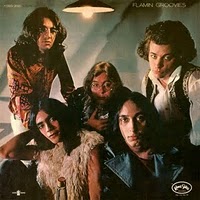 We all know progressive rock. But who among us knows of the superior pleasures of regressive rock? Only those who listen to the likes of the Flamin’ Groovies, a cult band in the truest sense, who sound out of time and place whenever they’re played, because they’re both backward and forward looking, trapped in a netherworld of bandwagon jumping and hipster snobbery. Yet sometimes they seem to nail the world down in just the right place with their no-frills garage rock and oddly innocent decadence. Flamingo is the one that does it for me. More consistent than Teenage Head (their other near-masterpiece), this one is an almost relentless 10-track barnburner. It’s a drunkard’s record. A brawler’s record. The record waiting for that summer’s night cruise in the Dodge Challenger. In a just world, “Second Cousin” and “She’s Falling Apart” would be classics. “Road House” sounds like The Who in ’65 crossed with The Gun Club in ’80. Join the cult. Go on, drink it, it’s good for you. –Will
We all know progressive rock. But who among us knows of the superior pleasures of regressive rock? Only those who listen to the likes of the Flamin’ Groovies, a cult band in the truest sense, who sound out of time and place whenever they’re played, because they’re both backward and forward looking, trapped in a netherworld of bandwagon jumping and hipster snobbery. Yet sometimes they seem to nail the world down in just the right place with their no-frills garage rock and oddly innocent decadence. Flamingo is the one that does it for me. More consistent than Teenage Head (their other near-masterpiece), this one is an almost relentless 10-track barnburner. It’s a drunkard’s record. A brawler’s record. The record waiting for that summer’s night cruise in the Dodge Challenger. In a just world, “Second Cousin” and “She’s Falling Apart” would be classics. “Road House” sounds like The Who in ’65 crossed with The Gun Club in ’80. Join the cult. Go on, drink it, it’s good for you. –Will


